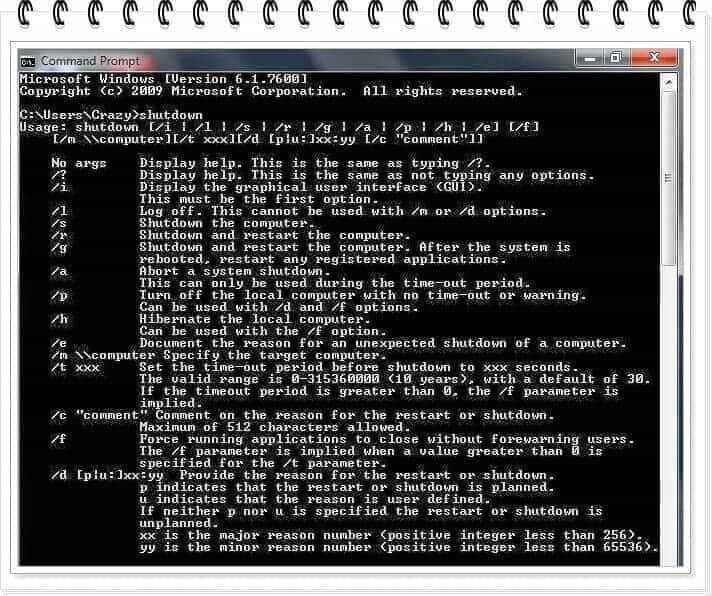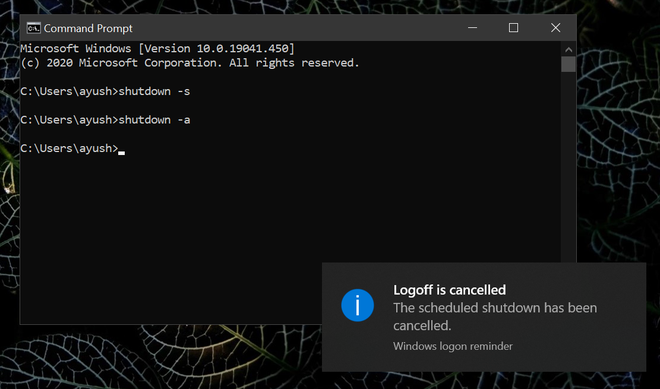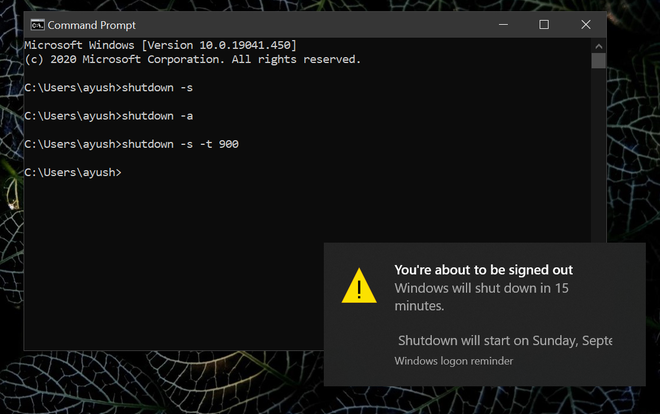

- COMMAND PROMPT COMMANDS SHUTDOWN HOW TO
- COMMAND PROMPT COMMANDS SHUTDOWN FULL
- COMMAND PROMPT COMMANDS SHUTDOWN PC
- COMMAND PROMPT COMMANDS SHUTDOWN WINDOWS

Then you will receive a pop-up message on the remote computer with the custom message.Įxample 3: Immediately restart a remote computer countdown: Shutdown /m \\pc2 /c "The IT department has initiated a remote restart on your computer" In the elevated Command Prompt window, you can refer to the following examples to shutdown/ restart remote computer CMD.Įxample 1: Shutdown or restart a remote computer:Įxample 2: Restart a remote computer with a custom message:

Type cmd in the Search box, and then right-click the Command Prompt app and select Run as administrator. In these examples, we will be on PC1 and perform the remote shutdown/restart operations on PC2.įirstly, follow the steps below to open the elevated Command Prompt window on the PC1.
COMMAND PROMPT COMMANDS SHUTDOWN HOW TO
To show you how to restart remote computer CMD more specifically, we summarize several command examples. Shut Down or Restart a Remote Computer with PowerShell Here we will show you how to perform the CMD/PowerShell restart computer.
COMMAND PROMPT COMMANDS SHUTDOWN WINDOWS
Once your Windows computer is turned off, don’t forget to turn it back on.Read More How to Shut down or Restart a Remote Computer Yy is the minor reason number (positive integer less than 65536). Xx is the major reason number (positive integer less than 256). U indicates that the reason is user-defined. P indicates that the restart or shutdown is planned. Provide the reason for the restart or shutdown. The /f parameter is implied when a value greater than 0 is specified for the /t parameter. If the time-out period is greater than 0, the /f parameter is implied.Ĭomment on the reason for the restart or shutdown.įorce running applications to close without forewarning users. The valid range is 0-315360000 (10 years), with a default of 30. Set the time-out period before shutdown to xxx seconds. Go to the advanced boot options menu and restart the computer. Performs a shutdown of the computer and prepares it for a fast startup.Ĭombine with a shutdown option to cause the next boot to go to the firmware user interface.ĭocument the reason for an unexpected shutdown of a computer. Turn off the local computer with no time-out or warning. This can only be used during the time-out period.Ĭombine with /fw to clear any pending boots to the firmware. After the system is rebooted, if Automatic Restart Sign-On is enabled, automatically sign in and lock the last interactive user. On the next boot, if Automatic Restart Sign-On is enabled, automatically sign in and lock the last interactive user.Īfter sign in, restart any registered applications.įull shutdown and restart the computer. This cannot be used with /m or /d options. RELATED: Why Does Rebooting a Computer Fix So Many Problems? List of Command Prompt Shutdown Switches and Parameters Switch and Parameterĭisplay the graphical user interface (GUI). A complete list of switches and respective descriptions will be displayed.įor the convenience of our readers, we’ve provided the complete list of the shutdown commands and descriptions provided by Microsoft below.
COMMAND PROMPT COMMANDS SHUTDOWN FULL
To get a full list of shut down options available to you, type shutdown /? in the Command Prompt and then press Enter.
COMMAND PROMPT COMMANDS SHUTDOWN PC
These are just two of the many different options for shutting down your Windows PC from the Command Prompt. Your PC will now begin the restart process within the next minute. Once in the Command Prompt, type shutdown /r. Open the Run window by pressing the Windows Key +R keys, type “cmd” in the box, and then select the “OK” button to open the Command Prompt.


 0 kommentar(er)
0 kommentar(er)
